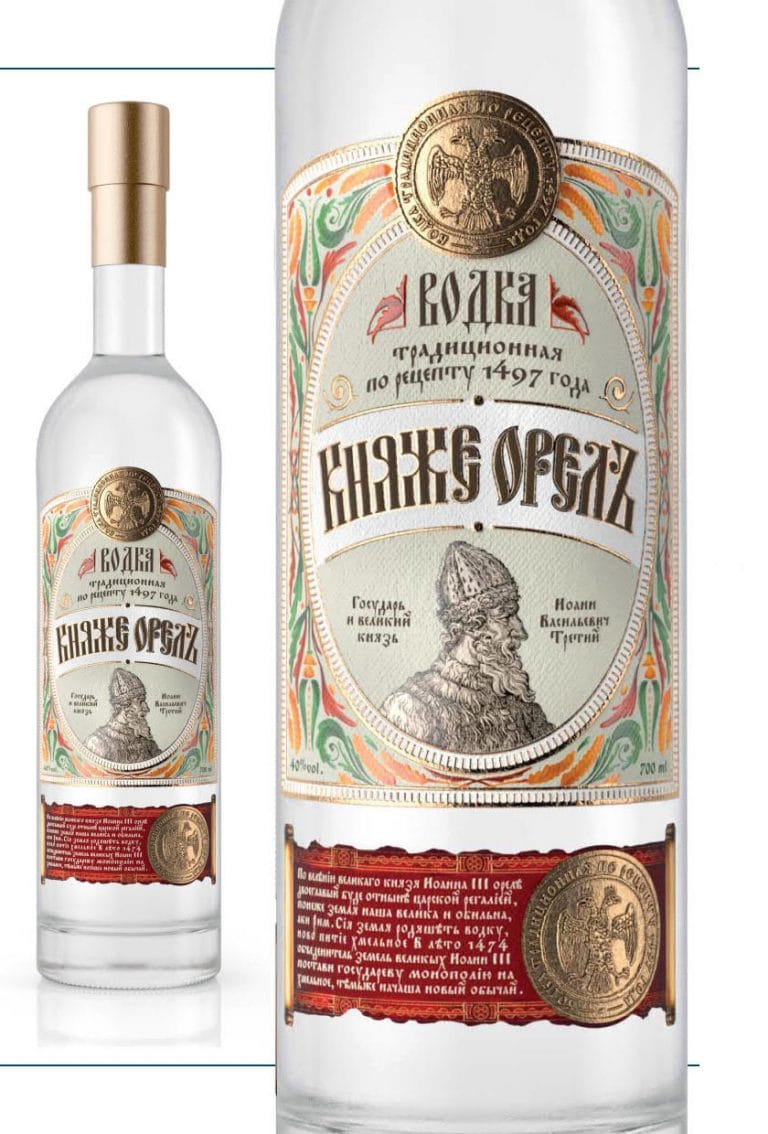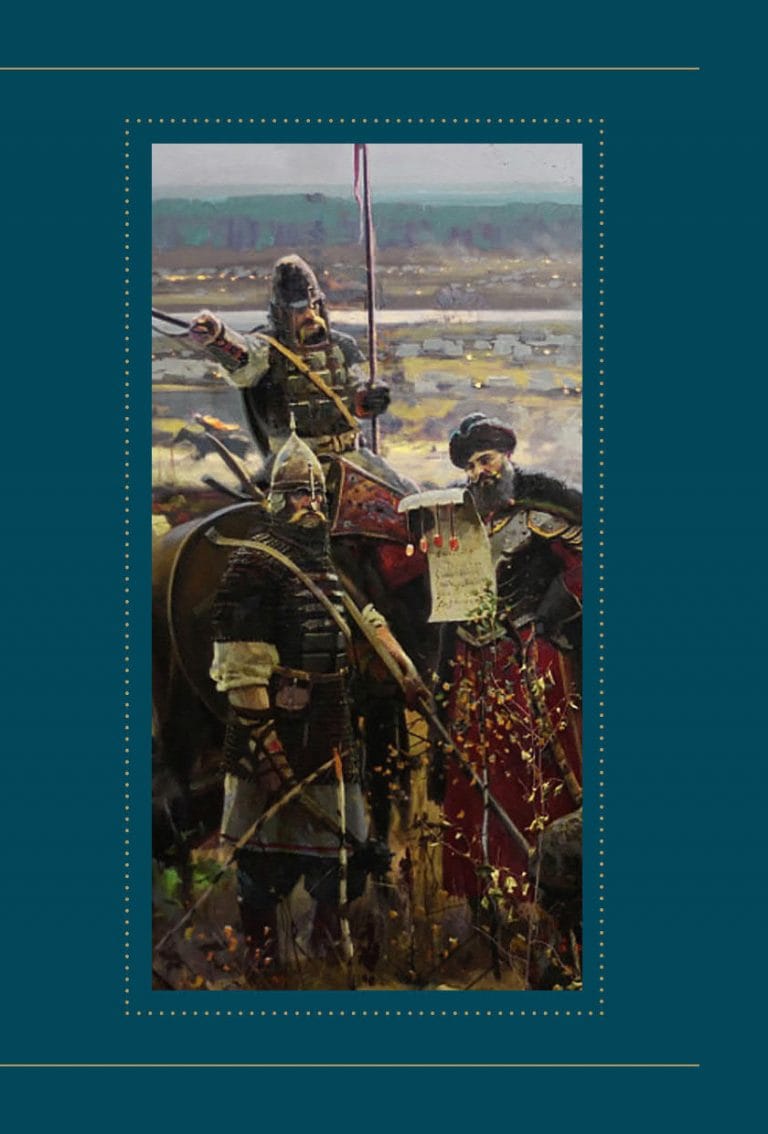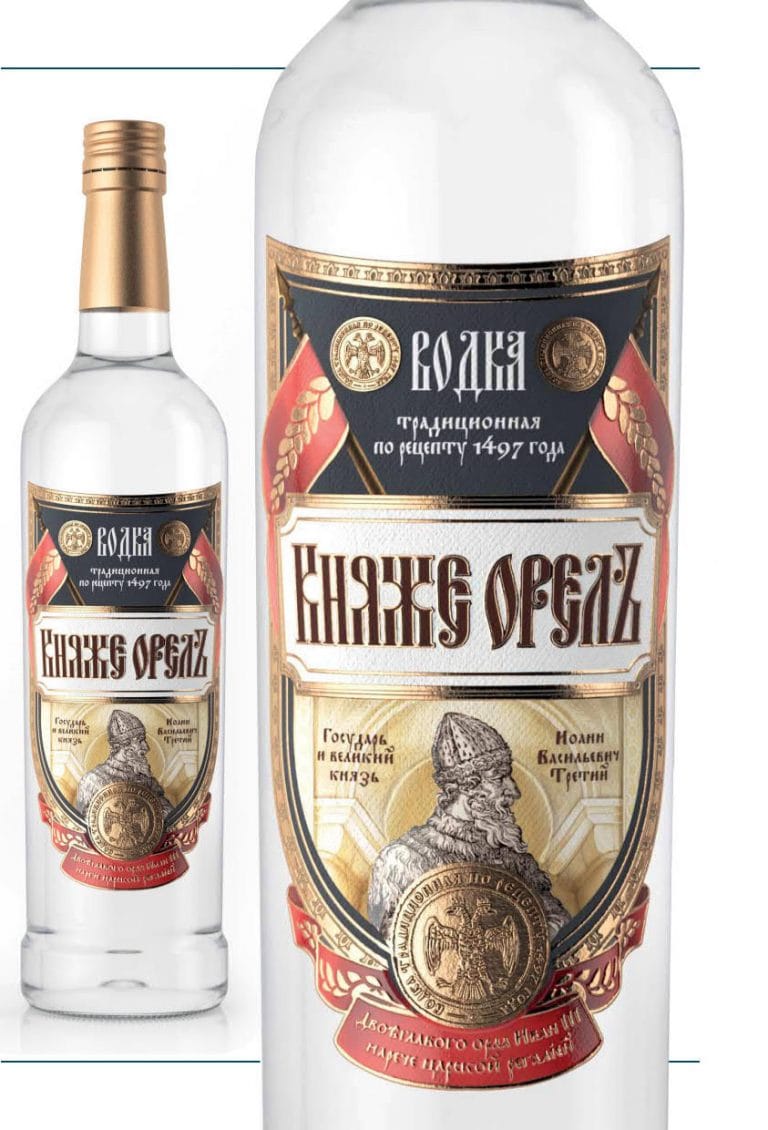STANDART PLUS SEGMENT VODKA
“Knjaze Orel is an imperial-style vodka deeply rooted in 500 years of Russian tradition. The double-headed eagle, a historic emblem that first appeared in 15th-century Rus’ under Ivan III, is intrinsically linked to Russian vodka, as both emerged during his reign.
During this period, Russia saw an abundance of surplus grain, which led to the development of distilled spirits, marking the birth of vodka. Before then, only low-alcohol beverages were consumed in Rus’. Alongside these economic and agricultural advancements, Ivan III unified the fragmented Russian principalities and was the first ruler to adopt the double-headed eagle as a state emblem, symbolizing Russia’s equal standing with the Roman Empire.
Knjaze Orel Vodka pays tribute to 500 years of distilling heritage, embodying not only ancient Russian recipes but also the legacy of one of Russia’s most influential rulers—Ivan III, “The Collector of Russian Lands.” Under his leadership, Russia was liberated from the Tatar-Mongol Yoke, culminating in the Great Stand on the Ugra River. This decisive moment secured Russia’s independence, established Moscow as the new capital, and even saw the first recorded use of the term “Russia”.
Knaze Orel – Traditional Russian Vodka
Knaze Orel vodka honors the age-old distilling traditions of 15th-century Russia, with a design that reflects its imperial heritage. The double-headed eagle, inspired by historical insignia from Ivan III’s reign, is prominently featured on the label, along with an authentic replica of a medieval Russian coin. This coin’s historical inscription recounts the 500-year legend of Russian vodka.
At the heart of the bottle’s design is a scroll, visually and linguistically reminiscent of a tsarist decree from the 15th century. It reads:
“By order of Ivan the Great, Grand Prince of All Rus’, the double-headed eagle shall henceforth be the tsarist regalia, as our land is as glorious and abundant as Rome. From this land originates vodka—an intoxicating elixir. In 1474, Ivan III, the Collector of Russian Lands, introduced the world’s first state monopoly on vodka production and trade, establishing a new custom.”
This decree underscores Knaze Orel’s long-standing legacy, reinforcing its historical authenticity, traditional craftsmanship, and superior quality.
ECONOMY SEGMENT VODKA
Knaze Orel vodka is a tribute to resilience, determination, and the unbreakable spirit of Russian independence.
This concept is deeply tied to one of the most defining moments in Russian history—the Great Stand on the Ugra River and the final consolidation of Russian self-identity. These historical events demonstrated Russia’s ability to resist superior forces, shaping the nation’s unwavering strength.
In 1480, under the leadership of Ivan III, Russian forces ended the tribute payments to the Great Horde, effectively securing independence after 250 years of Mongol-Tatar rule. This victory became a powerful metaphor for resilience—a spirit that cannot be broken, despite centuries of occupation and external threats.
Inspired by this historic moment, Knaze Orel Vodka is crafted for those who value strength, self-determination, and independence. It is a drink for those with unshakable willpower, ready to stand their ground, defend their principles, and celebrate the victories of their ancestors.
Knaze Orel – Traditional Russian Vodka
The label design of Knaze Orel Vodka is steeped in Russian heritage, ensuring it visually embodies the legacy of its origin. A red scroll, symbolizing victory and imperial decree, carries the inscription:
“By order of Ivan III, the double-headed eagle is now the tsarist regalia.”
This visual and linguistic connection to historical Russian traditions underscores Knaze Orel’s deep cultural significance.
The use of Old Russian script (Vyaz) in the typography, alongside intricate historical patterns and emblems, reinforces the authenticity of the brand. Every detail in the bottle’s presentation reflects a historically rooted, noble image of Russian vodka, appealing to those who cherish the victories of their forefathers and honor the memory of Russia’s rich past.
















